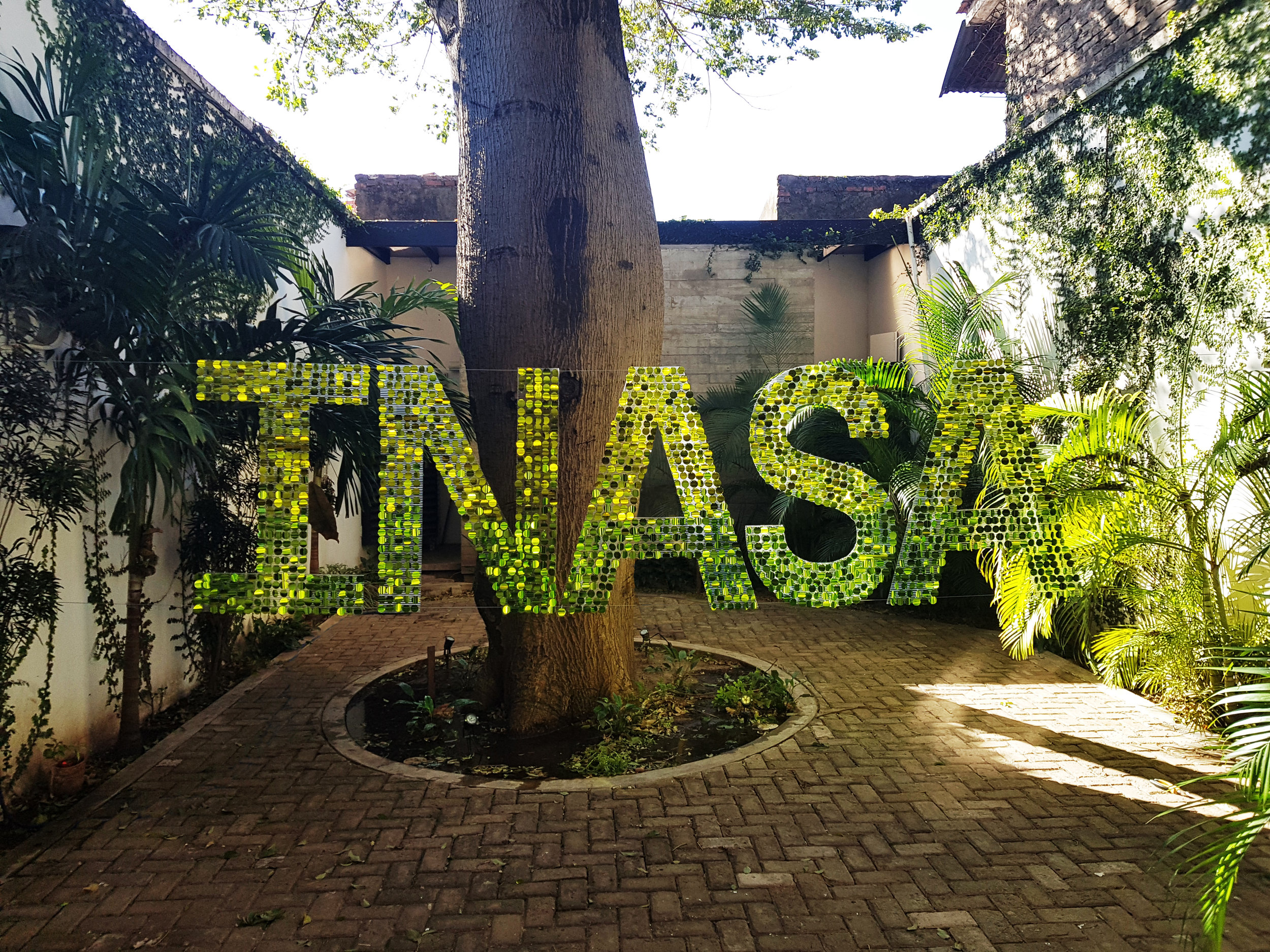



Es y No Es
“Es y No Es”, 2018, sequins, plastic, beads and pins, 4.5m x 1m
During my residency at Kiosko Galería in Bolivia, through Triangle Network and Gasworks, I researched non-binary language. While reading Bolivian theorist, Silvia Rivera Cusicanqui, I became aware of Inasa, which is an Aymara word that means “that which is and is not” at the same time. I created this inclusive word to explore spaces where identity is unfixed and where cultures, gender, and language converge.